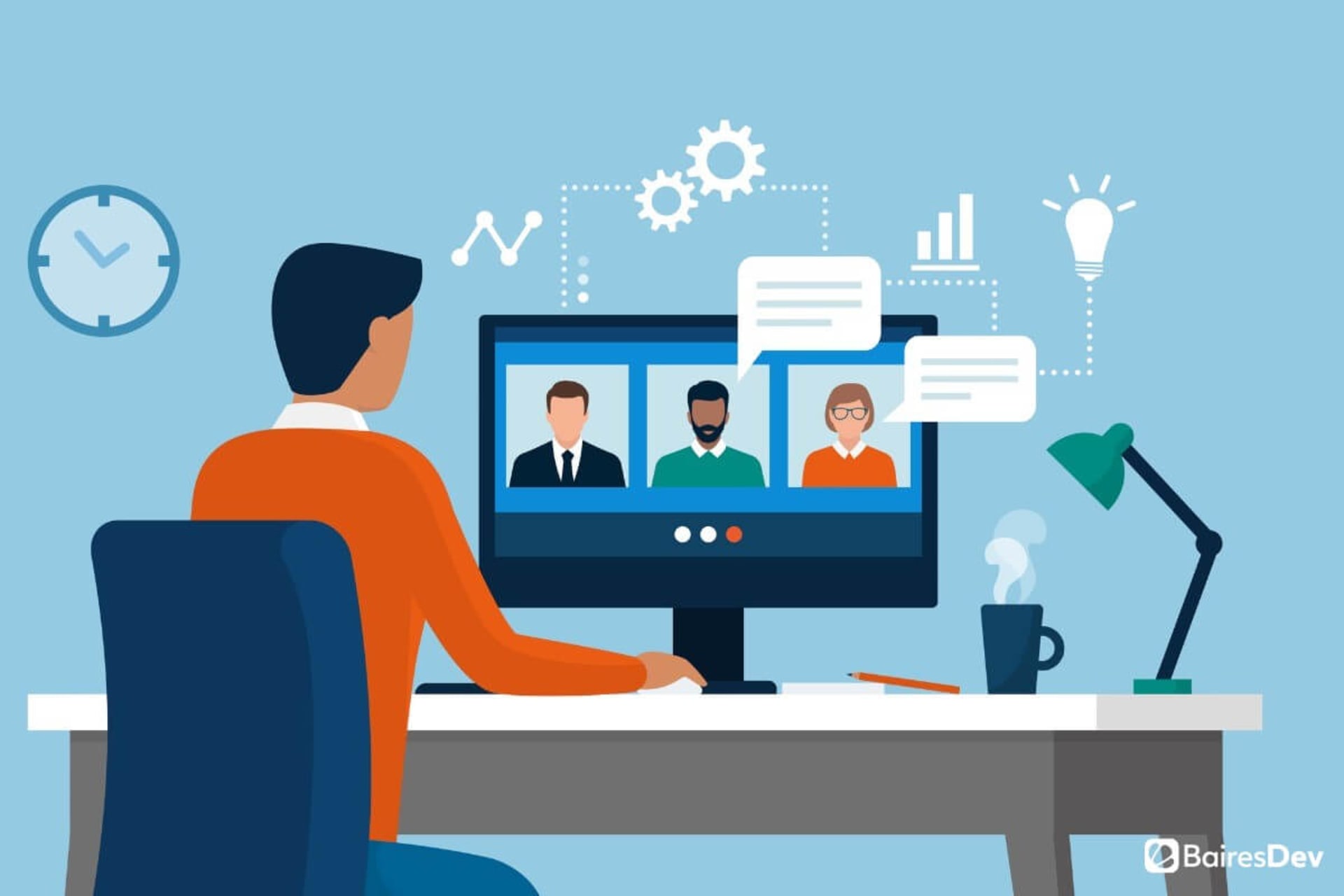When the COVID-19 pandemic struck and employers sent team members home to work, not all of them knew what equipment would be required to make this endeavor successful. Since then, leaders and team members have been experimenting with different setups to ensure everyone can be as productive as possible.
As work from home (WFH) arrangements become the norm, employers should make sure team members have what they need. Not everyone will need the same equipment, but experts agree some items are among the basics. The following video describes many of them, which we then describe below:
Furniture and Hardware
Sitting for too long, especially with poor posture, can cause muscle stiffness, joint problems, and repetitive stress injuries. Office workers need the right furniture set up correctly to ensure proper body alignment to avoid these issues. For example, a worker’s thighs and forearms should be parallel to the floor and their back should have support to prevent slouching. A desk at the proper height and an ergonomic chair should support these requirements.
A sitting-standing desk is another means to help workers avoid problems that come from sitting too much. Many different styles are available, and companies can also look into stands that sit on a desk and serve the same purpose.
Other accessories can help workers maintain the right posture. They include a laptop stand to place the laptop at the right height (eyes should be looking slightly downward) or a larger monitor (to prevent squinting) placed at the right height. If a desk can’t be adjusted to the right height, a keyboard tray may help. And a footrest can help smaller workers keep their legs at the proper angle.
Computer
Naturally, employees working from home need a computer. It could be a company laptop or one the team member already owns. Company computers are likely to be more secure, though every business should have bring-your-own-device (BYOD) policies to secure employees’ machines.
Workers will also need computer accessories including:
- Keyboard – should be ergonomic and fit into the existing setup
- Mouse or trackpad – should be ergonomic and fit into the existing setup
- Monitor – should be placed at the right height and be large enough to easily see
- Printer and/or scanner – should be small enough to be placed within easy reach
- External hard drive – to be used for backups if needed
- Surge protector – to protect data
- Other accessories – depending on job requirements
Supportive Technology
In addition to the computer, employees who work from home need the services and technology to make it work correctly and securely. Here are some of the most important ones:
- Internet service. To run most software required for remote work, team members should have high-speed service of at least 50 Mbps. A higher speed may be required if others in a household are also working or learning from home. Wired ethernet connections are most robust, though Wi-Fi is fine for basic office work.
- Router. A home router should be equipped with Wi-Fi dual band and support standards like 802.11ac, 802.11ax (Wi-Fi 6), and 802.11b/g/n to support older devices.
- Antivirus and antimalware software. No computer should be without these critical software components, as cyber intrusions can impact not just one worker’s system, but the entire company network. Each company should standardize on reliable applications and use and update them consistently on all computers in or outside of the office.
Communication Accessories
One of the key skills team members must gain or improve when they work from home is communicating online. Messaging, video calls, phone calls, and participation in discussion boards are all critical for making decisions and asking questions. The better equipment workers have, the clearer their communications will be. Here are some of the critical components:
- Webcam. Essential for video meetings, high-quality webcams enable coworkers to get a clear picture of each team member.
- Microphone. Another piece of equipment that should be high quality, microphones enable team members to be heard well on both voice and video calls. Marketing professionals and executives might also want to use them for podcasting video voice-overs.
- Headset. A headset can perform multiple functions. One with noise-canceling properties can help block out background noise that can be distracting at home, such as others working, participating in home learning, or recreating. They can also serve as headsets to hear and speak during voice and video calls.
- Communication software. The right software can make the difference between efficient and inefficient communication within a group. Businesses should examine the options wisely and standardize on one that will work across company teams.
Protective Storage
Working from home includes different security considerations than working at the office. While situations (such as spilled coffee) might arise that could damage equipment at the office, those at home are more unpredictable (think children and pets). The equipment mentioned in the previous sections must be protected to preserve data and valuable assets. Computers and other important hardware should be safely put away in a bin or drawer when not in use.
In addition to computer hardware, some workers might have paperwork, books, binders, or other equipment or materials that require storage. Filing cabinets or other sets of drawers are perfect for that. Team members who have limited space available may need special types of storage, such as under-bed bins to store their mobile office when it’s not in use.
Employees who are spending time working at multiple sites (such as home, coffee shops, office, airports, and client offices) also need appropriate carriers or luggage to transport necessary items between locations.
Start With the Basics
As many company leaders and employees have discovered, working from home can be just as effective as working at the office. But, to ensure the highest productivity, team members who work from home need the right technology and equipment. To get the best results, start with the items listed here, then listen to team members to understand what additional items will make it easier for them to give you their best.






